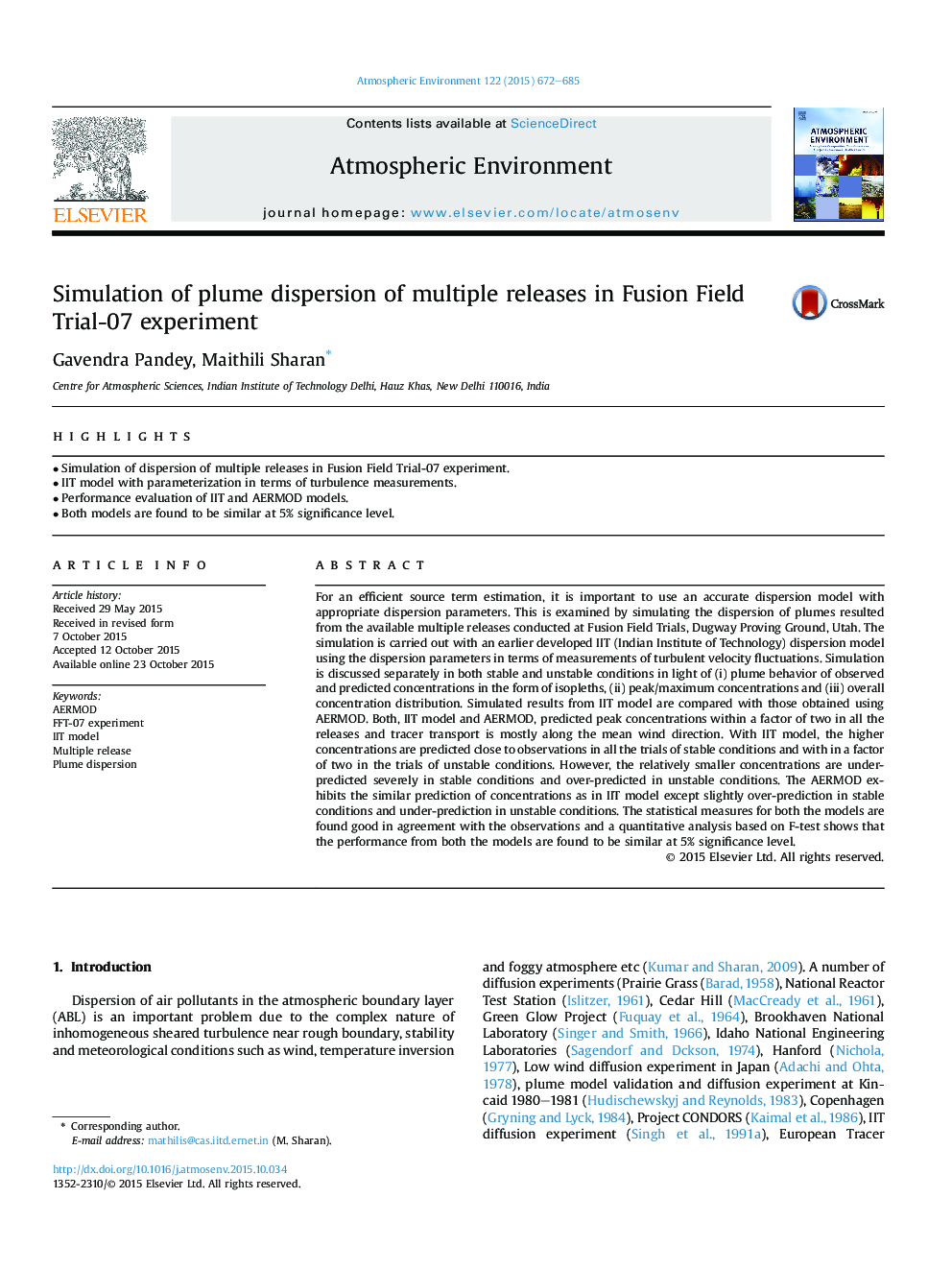| Article ID | Journal | Published Year | Pages | File Type |
|---|---|---|---|---|
| 6337080 | Atmospheric Environment | 2015 | 14 Pages |
Abstract
For an efficient source term estimation, it is important to use an accurate dispersion model with appropriate dispersion parameters. This is examined by simulating the dispersion of plumes resulted from the available multiple releases conducted at Fusion Field Trials, Dugway Proving Ground, Utah. The simulation is carried out with an earlier developed IIT (Indian Institute of Technology) dispersion model using the dispersion parameters in terms of measurements of turbulent velocity fluctuations. Simulation is discussed separately in both stable and unstable conditions in light of (i) plume behavior of observed and predicted concentrations in the form of isopleths, (ii) peak/maximum concentrations and (iii) overall concentration distribution. Simulated results from IIT model are compared with those obtained using AERMOD. Both, IIT model and AERMOD, predicted peak concentrations within a factor of two in all the releases and tracer transport is mostly along the mean wind direction. With IIT model, the higher concentrations are predicted close to observations in all the trials of stable conditions and with in a factor of two in the trials of unstable conditions. However, the relatively smaller concentrations are under-predicted severely in stable conditions and over-predicted in unstable conditions. The AERMOD exhibits the similar prediction of concentrations as in IIT model except slightly over-prediction in stable conditions and under-prediction in unstable conditions. The statistical measures for both the models are found good in agreement with the observations and a quantitative analysis based on F-test shows that the performance from both the models are found to be similar at 5% significance level.
Keywords
Related Topics
Physical Sciences and Engineering
Earth and Planetary Sciences
Atmospheric Science
Authors
Gavendra Pandey, Maithili Sharan,
